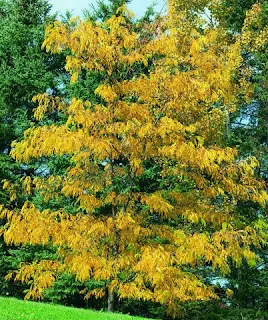A
Ash trees (Fraxinus spp.) are tall, deciduous trees known for their strong wood and broad canopy. Native to North America, Europe, and Asia, they thrive in full sun and well-drained soil, growing up to 60 feet in height. Ash trees are often used in landscaping for their shade and aesthetic appeal, as well as for their rapid growth rate. They bloom in early spring with small, greenish-purple flowers and produce distinctive winged seeds. Despite their beauty and utility, ash trees face threats from pests like the emerald ash borer, which has devastated ash populations in many areas.
Common Name: Ash Tree
Botanical Name: Fraxinus spp.
Family: Oleaceae
Plant Type: Deciduous Tree
Mature Size: 30-60 feet tall, 30-40 feet wide
Sun Exposure: Full sun to partial shade
Soil Type: Well-drained, loamy soil
Soil pH: 6.0 to 7.5
Bloom Time: Spring
Flower Color: Greenish-purple
Hardiness Zones: 3-9
Native Area: North America, Europe, and Asia
Care for Ash Tree:
Ash trees are known for their sturdy wood and broad canopy, making them a popular choice for landscapes and urban planting. They grow best in full sun and well-drained soil, thriving in a variety of conditions. Regular watering during dry periods is important, but be sure to avoid waterlogging the roots. Ash trees don’t require much fertilization, but they can benefit from a balanced fertilizer in early spring. Periodic pruning helps maintain the tree’s shape and remove dead or damaged wood.
Types of Ash Trees:
- White Ash (Fraxinus americana): One of the most common types, known for its tall height and strong, straight trunk.
- Green Ash (Fraxinus pennsylvanica): A hardy species often used in landscaping and street tree planting.
- Black Ash (Fraxinus nigra): Grows in wet, swampy areas, known for its dark bark and branching pattern.
- Mountain Ash (Sorbus aucuparia): While not a true ash, this tree is often included in ash family discussions for its similar characteristics.
Pruning:
Prune ash trees in late winter or early spring while they are still dormant. Focus on removing dead or damaged branches, thinning out crowded areas, and shaping the tree to encourage healthy growth. Avoid heavy pruning, as it can stress the tree and reduce its ability to produce leaves and flowers.
Propagating:
Ash trees are typically propagated by:
- Cuttings: Softwood cuttings taken in late spring or early summer can be rooted in a damp environment.
- Seed: Ash trees can also be grown from seed, which is collected in the fall and stratified before planting in spring.
How to Grow Ash Tree from Seed:
- Collect seeds from mature trees in late summer or early fall.
- Remove the seeds from their capsules and place them in a moist paper towel.
- Stratify the seeds by refrigerating them for 30-60 days.
- After stratification, plant the seeds in well-drained soil outdoors or in a container.
- Water regularly, and the seeds should germinate in 2-4 weeks.
Potting and Repotting:
Ash trees are best suited for planting in the ground due to their large size. However, if growing in a container, select a large pot with good drainage. Repot young trees every 1-2 years to allow for root expansion, and refresh the soil with each repotting.
Common Pests & Plant Diseases:
- Emerald Ash Borer: A destructive insect that targets ash trees, causing significant damage. Management includes removing affected trees and applying insecticides.
- Ash Yellows: A disease that causes leaf discoloration and dieback. Prune affected branches and remove fallen leaves to reduce spread.
- Powdery Mildew: A fungal infection that appears as white, powdery spots on leaves. It can be controlled with fungicides.
- Leaf Spot: Causes dark spots on leaves and can be managed by proper spacing and using fungicides if necessary.
How to Get to Bloom:
Ash trees generally bloom in early spring, producing small, inconspicuous flowers. To encourage healthy blooms, ensure the tree receives enough sunlight, moisture, and nutrients. Ash trees are wind-pollinated, so they do not require cross-pollination but may produce more seeds when other ash trees are nearby.
Common Problems:
- Yellowing Leaves: Often caused by nutrient deficiencies, especially nitrogen or iron.
- Dieback: Can be a result of pests like the emerald ash borer or environmental stress.
- Leaf Drop: Premature leaf drop may occur due to drought stress, disease, or pest damage.
FAQ:
Q: How fast do ash trees grow?
A: Ash trees are fast-growing, typically adding 2-3 feet of height per year under ideal conditions.
Q: Can ash trees tolerate wet soil?
A: While some species, like the Black Ash, prefer wet environments, most ash trees grow best in well-drained, moderately moist soil.
Q: Do ash trees lose their leaves in the winter?
A: Yes, ash trees are deciduous and lose their leaves in fall, which regrow in spring.
TAGS:
#AshTree #TreeCare #AshTreeCare #Gardening #Landscaping #DeciduousTrees #AshTreePruning #EmeraldAshBorer #TreeDiseases #TreePlanting #AshTreeProblems




No comments:
Post a Comment